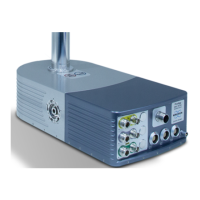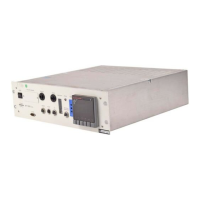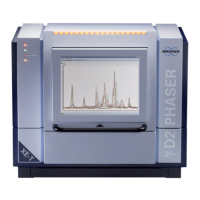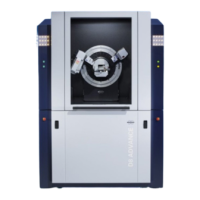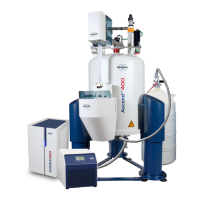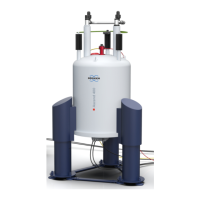Solvent suppression
CryoProbe User Manual BRUKER 61 (107)
level. But a misset z-shim affects all resonances and spoils their lineshapes. In
case of an apparently ‘optimum’ shim but unsatisfactory resolution, start an acqui-
sition in gs mode with on-line Fourier transform and touch-up Z, X, Y, ZX, and ZY
(other shims are usually of little effect). When changing the VT gas flow rate, the
procedure must be repeated.
Solvent suppression 5.8
0
There is no preferred solvent suppression technique for use with a CryoProbe. All
standard methods like presaturation, W
ATERGATE, and Excitation Sculpting can be
used as usual. Select a method that allows rg ≥ 100 for which the receiver noise
is negligible.
Due to the inherent geometrical restrictions in a cryogenic NMR probe, the RF
coils must be located further away from the sample as compared to conventional
probes since the vacuum thermal insulation requires some additional space. As a
consequence, RF fringe fields extend further above and below the main sample
region, which in turn makes the solvent suppression more difficult.
Gradients 5.9
0
Gradient experiments may benefit from increasing the gradient strength relative to
conventional probes by 10-20 units on the %-scale. Sine shapes with 100 steps
resolution are recommended.
Pulse programs 5.10
0
There are no special commands or particular sequences required in pulse pro-
grams for use with a CryoProbe.
Automation 5.11
0
Automation with IconNMR and sample changer can be done as usual.
CAUTION: Make sure that acquisition parameter sets for conventional probes are
not confused with those for a CryoProbe! CryoProbes usually operate at signifi-
cantly lower RF powers and higher VT gas flow rates.

